Samsung Galaxy A72 review

Familiar 64MP cam, now with OIS and a 3x telephoto sidekick
One of the areas the A72 offers tangible upgrades over both its predecessor and its smaller A52 sibling is the camera department. It is still based around a familiar 64MP Quad-Bayer main camera, with a decently wide f/1.8 aperture. Not too "familiar" though, since despite our best efforts, just like the A52, the A72 did not give up any identifying information on its sensors that might help us pinpoint the actual hardware.

Regardless, the main camera on the A72 now has OIS, which is a great addition. The other major new addition is definitely the 8MP, f/2.4 dedicated telephoto camera. It is advertised as offering 3x optical zoom and also gets the benefit of OIS.
The 12MP, f/2.2 ultrawide camera is a fairly common occurrence of recent Samsung devices, but is still great to see in terms of versatility. Same goes for the 5MP, f/2.4 dedicated macro snapper. That makes a total of four, with the notable omission of a depth camera, as found on the A71 and A52, among others. We would trade-in a depth sensor for a telephoto cam any day of the week. Plus, honestly, you can have decent depth effect without one, as well as pretty bad depth effect even with the best of dedicated sensors.
Camera UI
Samsung's camera UX has remained pretty consistent in recent years. Aside from some incremental polish here and there, of course. If you are coming from another Galaxy device, you should feel right at home. Shutter and a mode carousel on the right, along with toggles for cameras and zoom levels (in the case of the A72 - 0.5x, 1x, 2x, 4x, 10x, 20x and 30x), as well as a Scene optimizer indicator/toggle in the corner. On the opposite side - resolution and aspect, timer, flash controls and some color filters.
Samsung did not skimp on the available modes either. In no particular order, users get to enjoy things like AR DOODLE, FOOD mode, as well as SINGLE TAKE. The latter instantly captures a few different shots and even short clips with a single press of the shutter key and is a perfect example of a feature that originally debuted a while back on flagship Galaxy devices and has successfully made its way to the mid-range.
One actually new addition to the camera experience on the A72 and A52 is FUN MODE. It is prominently featured in the PR materials, as well and for good reason. It is basically a collaboration with Snapchat that puts some of that app's fun AR filters in the native Samsung camera app. It's just a bit of extra trendy "flare" to have around.
FUN MODE works for both photos and videos (captured by long-pressing the shutter key). The filter selection consists of 7 "basic" lenses, one of which gets changed-out daily, as well as an additional menu of 9 more effects that also get "changed regularly".
You need an active network connection for FUN MODE to work, which makes sense, considering all of the effect "swapping" that is going on. Since everything is constantly subject to change, you can't pick your favorites and go back to them. The entire feature is more of a promotional thing, meant to direct you to the actual Snapchat app for the full experience. We don't mind that, even if the lack of a static filter selection is a bit annoying. Plus, the feature fits nicely with the "Awesome is for everyone" slogan for the new Galaxy A devices.

Circling back to the main part of the camera app and its settings, in particular, we find some nifty additional options, like HEIF for images and HEVC for videos. Also, a floating shutter and extensive voice commands and a palm shot shortcut. Nothing out of the ordinary, though. It is worth noting that the options change depending on whether you enter settings from a photo or video come. The latter is where you will find a toggle for the always-on by default video stabilization, in case you want to do some tripod shooting.
There is a Pro mode for photos. A fairly in-depth one at that. It offers ISO adjustment from 50 to 4000, shutter speed from 1/6000 to 10 seconds, white balance from 2300K to 1000K, as well as exposure compensation and the ability to set different spot metering for the expose and autofocus.
Pro mode has a separate Levels menu. It offers control over contrast, highlights, shadows, saturation and tint. These are adjustments typically found in editors during post. It is nifty to have them while you are capturing photos.
Video capture mode is just slightly different from the main photo one, with most controls in their familiar places. The zoom level and camera selection on the Galaxy A72 stay the same with video capture. The ultrawide can even do 4K recording itself. But, more on that in the video section.
Last, but not least, Pro video mode is a thing as well and surprisingly offers most of the same adjustments and options as Pro photo mode. Not too shabby.
Daylight image quality
The main camera on the Galaxy A72 can best be described as dependable, even if unimpressive. To be fair, that's mostly true for all modern Quad-Bayer snappers floating around. The 64MP, f/1.8 unit on the A72, in particular, has the added benefit of OIS. By default, it produces 16MP stills. Dynamic range is wide for what we're used to in the midrange, though a higher-end phone will still get you better developed tonal extremes. Colors are usually lively, without being too overexaggerated.
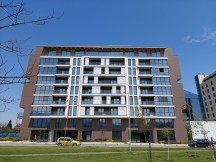








Samsung Galaxy A72 16MP main camera samples
Auto HDR brightens up the scene nicely, especially shadows and ca even salvage some clipped highlights. The only issue we had with Auto HDR is that it didn't always trigger consistently to do its job. Even so, you should just have it on, since the worst it can do is not fix the occasional shot.


Samsung Galaxy A72 16MP main camera samples: inconsistent Auto HDR
While the Quad-Bayer main can is intended to produce 16MP binned shots for best results, you can still capture 64MP stills. The amount of extra detail you can get from the 64MP shots is actually quite impressive. However, you should know that the A72 is a bit sluggish when it comes to taking 64MP stills. Also, finer geometrical patterns tend to trip up the algorithm and often result in weird color fringing and other artifacts. Plus, a single photo is like 18 MB in size.
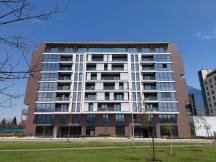








Samsung Galaxy A72 64MP main camera samples
The 8MP, f/2.4 telephoto camera on the Galaxy A72 produces very nice stills in good light conditions. The level of detail and sharpness of the shots tend to stand out. There is also little noise. Dynamic range is understandably not as wide as on the main camera, but Auto HDR is doing the best it can on that front.









Samsung Galaxy A72 8MP telephoto 3x camera samples
The telephoto has a different color rendition than the main one. You can even spot it in the camera viewfinder. The telephoto usually goes for a slightly colder palette, which is not necessarily worse. In fact, the opposite argument that the main camera tends to favor an overly warm look can be made just as easily.
You can go beyond 3x zoom as well. The present are 4x, 10x, 20x and 30x, but any other zoom level in between is accessible as well. Makes sense, since it's all digital zoom done through the telephoto.

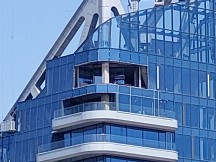
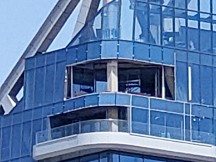
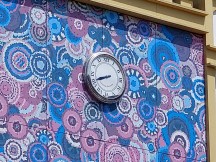


Samsung Galaxy A72 8MP telephoto camera samples: 10x • 20x • 30x
We would say that 10x shots are definitely usable. You can definitely see some over-sharpening artifacts and these only get worse as you increase the zoom level. Even so, depending on your expectations, even 30x shots can serve some purpose.






Samsung Galaxy A72 8MP telephoto camera samples: 10x • 20x • 30x
The ultrawide 12MP camera on the A72 is pretty common to see on recent Samsung devices. It captures solid photos for its class - we quite enjoyed the colors and dynamic range.









Samsung Galaxy A72 12MP ultrawide camera samples
Just like with the telephoto, the color rendition by the ultrawide is not very close to the main camera's. That being said, both the telephoto and ultrawide tend to have a colder palette and look decently similar to each other. Hence, the warmer look by the main camera might actually be the one that needs some tuning to match and not the other way around.
As with all recent Samsungs, there's software distortion correction enabled on the Galaxy A72. It's only marginally detrimental to image quality in the corners, while the geometric benefits are huge, and we'd keep it on unless the barrel distortion look is what you're after.
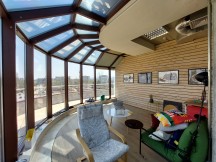
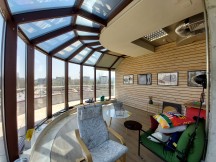


Ultrawide distortion correction samples: On • Off
Low-light image quality
Low-light photo quality from the main 64MP camera on the Galaxy is above average overall for a mid-ranger. Colors are generally good, even if slightly desaturated and the dynamic range is decently wide. Wider than most, we would say. The highlight rendition is exemplary.
The reason for that is that the camera's Scene optimizer automatically triggers an Auto Night mode in dark scenes. We guess we have that to thank for the great dynamic range.






Samsung Galaxy A72 16MP main camera, low-light samples
Besides the regular Auto mode there is also a dedicated Night mode - just for the main cam. However, we are disappointed by the results. Night mode brightens up shadows only marginally and yet causes highlights to clip compared to the Auto mode.
It also takes a lot longer to capture an image and it crops the 16MP photos down to 12MP, which results in a tighter field of view. Overall, we'd recommend that you stick to the regular Auto mode in low-light situations.






Samsung Galaxy A72 12MP main camera Night mode samples
The 3x, 8MP telephoto camera holds-up pretty well in low-light conditions. Well, considering its fairly dim f/2.4 lens, that is. Shots definitely look better than what you get by cropping and zooming from a 64MP Quad-Bayer. Detail is good and so is sharpness.



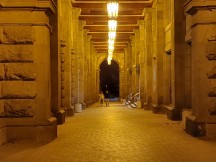


Samsung Galaxy A72 8MP telephoto 3x camera, low-light samples
Zooming past the optical 3x in low-light conditions sees the overall photo quality drop-off rather quickly. You can still get usable results out of the A72, though, up until around 10x zoom if you are patient enough. Any zoom setting past that in low-light tends to look more like a painting than a photo, though.




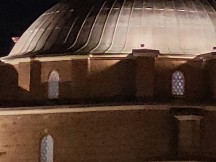




Samsung Galaxy A72 8MP telephoto low-light camera samples: 10x • 20x • 30x
The 12MP ultrawide delivered very decent shots for a mid-ranger, too. If presented with evenly lit scenes, the A72's ultra-wide will create very good images with decent detail, saturated colors, and a reasonably wide dynamic range - again thanks to the Auto Night mode.

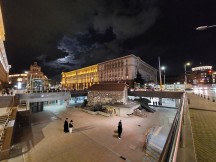




Samsung Galaxy A72 12MP ultrawide, low-light samples
Rounding off the main camera section, we took our standard set of poster shots, under controlled lighting with the A72. You can see how it holds up against any competitor of your choosing in our extensive photo compare database. Pixel-peep to your heart's content.



Samsung Galaxy A72 against the Galaxy A52 and the Xiaomi Mi 11 Lite in our Photo compare tool



64MP: Samsung Galaxy A72 against the Galaxy A52 and the Xiaomi Mi 11 Lite in our Photo compare tool
Portrait mode
Portrait mode, also sometimes referred to as Live focus in Samsung "slang" on the Galaxy A72 is pretty good, but not perfect. The subject separation and background blur effect actually both perform really well. Of course, the occasional stray hair or a particularly busy background will trip the algorithm up, but surprisingly, nor nearly as much as it happened on the Galaxy A52 we recently reviewed. Even though that device has a dedicated 5MP depth module, absent on the A72. Go figure.






Samsung Galaxy A72 Portrait mode 16MP main camera samples
The issue with this mode, however, is that none of our samples have the person's face tack sharp in focus. Unlike our non-human subjects, which came out perfectly in focus.





Samsung Galaxy A72 Portrait mode 16MP main camera samples: non-human subjects
Macro shots
The A72 might have ditched the depth sensor its A52 sibling has, but the dedicated 5MP, f/2.4 macro camera is still present. The shots it produces are actually quite impressive. Well, in relative terms, of course. While it is a fixed-focus camera, the focus plane is fairly wide and forgiving.






Samsung Galaxy A72 5MP macro samples
You don't need to get uncomfortably close to object to get a nice clean shot either. Shots come out nice and detailed. Generally, a lot better than what you get from the alternative 2MP macro snappers floating around in the mid-ranger space.
Selfies
The Galaxy A72 has a 32MP selfies camera, just like the A52. Overall selfie quality is solid, with plenty of detail in decent noise performance. Skin tones can be a bit inconsistent from time to time. Thankfully, there is both Auto HDR and Scene optimizer available on the selfie. There is no autofocus on the selfie cam, but just like the macro, it has a forgivingly-wide focus plane.









Samsung Galaxy A72 8MP selfie samples
The selfie on the A72 is a Quad-Bayer, which means that by default it shoots at 3264 x 2448 pixels, or right around 8MP. However, in typical Samsung fashion, the selfie cam has a narrow and wide mode. We wish this would become a thing of the past already. At least you can set the camera app to remember your last setting.
Anyway, in wide mode, selfies come out in 4000 x 3000 pixels or exactly 12MP. Presumably, there's some interpolation going on because a 32MP Quad Bayer camera should output 8MP photos. That being said, we can't notice any noteworthy difference in quality and detail between the two modes.









Samsung Galaxy A72 12MP selfie samples
Finally, here are some selfies from the Galaxy A72 with lower-light conditions.





Samsung Galaxy A72 low-light selfie samples
Video recording
The Galaxy A72 can do up to 4K@30fps capture on all of its cameras. Well, sans the macro, of course, and we are fans of the video recording quality here.

The main camera, ultrawide and telephoto all manage to maintain a solid bitrate of around 48Mb/s for their 4K footage - AVC + 48kHz stereo audio, inside an h.264 MP4 container. Naturally, you can choose to do HEVC instead and save some space at the expense of some compatibility.
At 4K the main camera has what we would describe as balanced and mature processing. There is plenty of detail and the dynamic range is wide enough to not miss too much in the shadows even in these somewhat challenging lighting conditions. Noise is pretty much non-existent and everything is nice and sharp. Colors look natural, without coming off as dull.
The ultrawide camera also holds its own at 4K. There is a bit more noise in the shot and the dynamic range is slightly narrower than on the main camera, resulting in the occasional clipped highlight or crushed shadow. That's all par for the course with an ultrawide. As with stills, colors between the ultrawide and the main snappers are not an exact match. The ultrawide seems to have a slightly colder palette. Which, again, is not worse by any means, just not perfectly consistent across cameras.
The 3x telephoto offers a great level of detail at 4K. We were actually kind of surprised how much we could make out. An impressive all-round showing for a mid-range telephoto.
While 3x is the optical limit of the dedicated telephoto camera, the Galaxy A72 will let you capture video at up to 4K resolution all the way up to 12x zoom. All of that is done through the telephoto. The viewfinder features presets for 4x, 10x and 12x. Naturally, noise ramps-up quickly alongside the zoom level. We also experienced some autofocus issues at higher zoom levels, but those were definitely related to the strong wind. In calmer weather, autofocus was not a problem.
We have to say that even at 12x these clips come out looking surprisingly usable. We wouldn't go and actually use them for any actual videography project or anything of the sort, but there's still plenty to work with for social media purposes.
Video stabilization works on any of the tree main cameras of the Galaxy A72, but only at FullHD resolution. Actually, stabilization comes in two "stages", for lack of a better term. There is a toggle in the general camera settings menu, which is enabled by default. That would be the basic stabilization, which, indeed, works on the ultrawide, main camera and telephoto at every zoom level. It does a very decent job at smoothing-out jitters and handles pans well. Here is a sample showcasing the primary camera with and without the basic stabilization.
Then there is Super steady. It gets its video feed from the ultrawide camera and also only works at FullHD. The extra smoothness is there, but the step-up from the regular stabilization to Super steady isn't all that major. You just have to decide whether it is worth the extra crop of the field of view. Here is the ultrawide with just basic stabilization against Super steady.
Here is a quick playlist showcasing how the Galaxy A72 handles itself in low-light conditions. It includes videos from the ultrawide, main camera as well as the 3x telephoto, all at 4K resolution.
Finally, you can check out the Galaxy A72 in our video comparison tool.



Samsung Galaxy A72 against the Samsung Galaxy A52 and the Xiaomi Mi 11 Lite in our Video compare tool
Reader comments
- Bay
- 16 Feb 2024
- y$6
What is camera sensor of samsung A72? Sony imx ?
- Anonymous
- 21 Sep 2023
- tZk
You must be a time traveler because you used the A72 for 3 years when the A72 was launched 2 years ago. You bunch of liars for Samsung are really pathetic.
- Anonymous
- 21 Sep 2023
- tZk
A72 was just launched 1.5 years when you made that comment, so how come you already use it for 4 years? Stop lying, you Samsung salesman






















